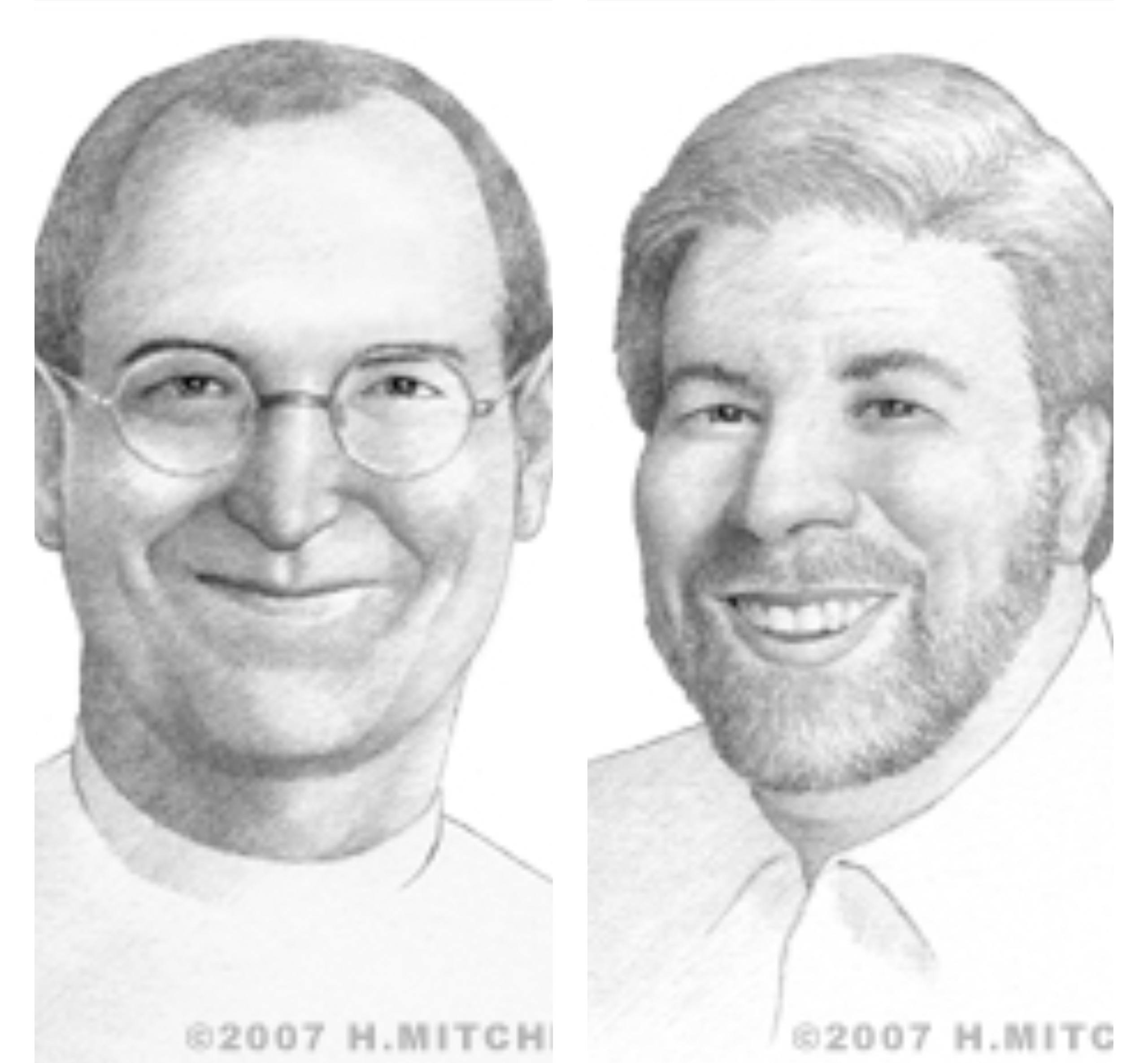Steve Jobs and Steve Wozniak
Steve Jobs and Steve Wozniak, the duo who began Apple Computer in 1976, are among the most well-known revolutionaries of the computing age. Their invention of the first true personal computer changed people’s ideas of what a computer could look like and what it could do to make their lives easier and their work more efficient. Apple continues to be one of the most popular brands of personal computing devices in the world.
Steven Paul Jobs was born on Feb. 24, 1955 in San Francisco and was adopted as an infant and raised by a couple in Los Altos, Calif. He entered Reed College in Portland, Ore. in 1972, but he dropped out after one semester to work for Atari, a maker of video games. He had become very interested in the emerging world of personal computing while still in high school, when he began attending lectures at Hewlett-Packard Co. This is where he met and befriended Wozniak.
Stephen Gary Wozniak was born on Aug. 11, 1959 in San Jose, Calif. He left the University of California at Berkeley before he finished his degree in order to work for Hewlett-Packard. He and Jobs were very involved with a local organization called the Homebrew Computer Club, where they discussed and experimented with hardware and software, including video games. It became clear to them that the personal computing era was about to heat up significantly.
Jobs became bent on starting a company of his own to build computers for individuals, and he convinced Wozniak to start it with him. They sold some of their prized belongings – for Jobs, a Volkswagen minibus, and for Wozniak, a programmable HP calculator – to raise $1300 to launch the enterprise. They built their first machines in Jobs’ family garage in 1976.
With Wozniak’s computing and software genius and Jobs’ marketing prowess, success came relatively quickly. They sold their first fifty machines to a dealer called the Byte Shop in Mountain View, Calif. Dubbed “Apple Is,” the computers sold for $666 each. They were the first single-board computers with onboard Read Only Memory, or ROM. They also had a video interface.
A year later, in 1977, Jobs and Wozniak introduced the Apple II, which included color graphics and housed its electronics inside a plastic case. Programmers began creating applications for the Apple II at Jobs’ urging. Soon, there were more than 15,000 applications available for the machine. This was the first mass marketed personal computer, and it took Apple to a new realm of success. The company secured $600,000 venture funding under the management of Mike Markkula, a former Intel executive, who signed on as Apple’s chairman.
In 1979, Apple designed its revolutionary Lisa computer. That same year, Wozniak was issued U.S. patent No. 4,136,359 for a microcomputer. Lisa, which finally hit the marketplace in 1983, was followed by the development of Macintosh, which introduced users to the now-familiar icon-rich interface, navigable by computer mouse. This interface has served as a model for virtually every consumer operating system maker in the world ever since.
Apple Computer went public in 1980, making its founders multi-millionaires. Jobs became chairman while Markkula took on the role of president. Wozniak left Apple after a plane crash damaged his memory in 1981 (though he has remained, officially, an Apple employee to this day). Jobs, meanwhile, continued to work on product development at Apple until 1985 when he left the company amid a power struggle with its then-president and CEO John Sculley.
In 1989, Jobs started a new computer products company, called NeXT, which he hoped would compete with Apple. This venture was unsuccessful in terms of hardware, but it did introduce object-oriented programming, which helps tremendously in streamlining software development processes. Jobs sold NeXT Software to Apple in 1997. Jobs also took the helm of Pixar computer animation studios, which he purchased from George Lucas in 1986 for less than $10 million. Within a decade, Pixar had turned into a feature film-making powerhouse. The studio’s first film made under his leadership, “Toy Story,” was the highest grossing domestic film of 1995. Jobs continued to serve as CEO of Pixar Studios until its acquisition by The Walt Disney Company in 2006. Jobs then went on to serve as a member of Disney’s Board of Directors.
Jobs also returned to Apple after a decade of absence. In 1996, he became an advisor to Apple's then-chairman, Gilbert F. Amelio. Jobs accepted the role of Apple chairman and CEO in 1997 and revitalized the company with improved products and services and the introduction of highly successful product lines, with the iPod, iPhone, and MacBook.
Wozniak, meanwhile, followed a different track, heading back to school to complete his BS degree in Electrical Engineering and Computer Science at U.C. Berkeley in 1987. He also became very involved in education, teaching fifth-grade students at local schools near his Silicon Valley, Calif. home and sponsoring a variety of education-focused programs in the U.S. and overseas. He consulted for Apple until 1985 and then founded CL 9, a company that developed remote control switches. In 2001, he co-founded Wheels of Zeus, or “WoZ,” (which is also one of his nicknames), in order to create wireless GPS technology systems. WoZ closed in 2006, after which point Wozniak co-founded Acquicor Technology with Gil Amelio. He is currently chief scientist at Primary Data.
Both Wozniak and Jobs have been recognized with countless awards and honors, including National Medals of Technology, awarded in 1985 by then-President Ronald Reagan. Wozniak was inducted into the Inventors Hall of Fame in 2000 and is a past recipient of the Heinz Award for Technology, The Economy, and Employment. Jobs was granted the Jefferson Award for Public Service in 1987 and was named Entrepreneur of the Decade by Inc. Magazine in 1989.
Jobs announced his resignation as Apple’s CEO in 2011 and was replaced by Chief Operating Officer, Tim Cook. Jobs passed away from pancreatic cancer on October 5, 2011.


